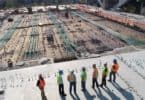Request for information (RFI in Construction) can help a project run smoothly and on schedule, but they can also cause delays, resulting in cost overruns and lost revenues. You should understand that timely RFI management is essential to successful project management and overall project success.
What is an RFI in construction?
RFI in construction is a document created and provided by one project party to another for clarification of a specific part of a construction project, such as design plans, specifications, contract clauses, and building standards.
Who is involved in an RFI?
When there is a question about a document, the general contractor or subcontractor shall submit an RFI to the person who originally provided the document (client, designer, etc.). The party receiving the RFI shall submit a reply to the contractor with a reply to its question.
Process of RFI in Construction
While this process seems straightforward, RFIs often become a source of delay, expense, conflict, and even legal claims. Therefore, all participants in construction projects have an interest in understanding how RFI in construction works and how to use them properly.
Construction RFIs come into play at various points of the construction process. During the bidding process, the contractor may submit an RFI in order to gain a fuller understanding of the details of the project and to finalize the quotation.
More generally, however, a contractor or subcontractor may request an RFI in construction when the building is underway to ask the designer or engineer to explain the drawing or specification.
An RFI can also be used by the contractor or supplier to document concerns regarding identified materials, to obtain more information on the intended use of the product, or to suggest the change or substitution of components.
Types of Construction RFIs
There are more than a dozen main types of RFIs for construction. These will include the following:
- Design Coordination: Such RFIs include organizing, communicating, and coordinating the design and related documents between project participants.
- Construction Coordination: This category of RFI covers requests for the organization and coordination of construction-related procedures, schedules, and safety items.
- Constructability Issues: These RFIs arise when the construction document articulates a detail or design that the contractor considers to be ineffective.
- Timing and Phasing: This type of RFI occurs when the builder needs to change the sequence of construction activities due to resource or labor constraints.
- Design Change: Some RFIs aim to revise the design in order to improve the construction or correct a construction mistake.
- Design Clarification: In this type of RFI, the applicant is seeking more information on the design in order to better understand its specifications and how they contribute to the project.
- Change in Method or Process: This RFI category arises when the contractor wants to change the specified building or installation technique.
- Material Change: With this type of RFI, the requester seeks to use materials other than those specified in the construction documents.
- Deleted Scope: These RFIs seek to remove work from the project.
- Incomplete Plans or Specs: This type of RFI applies to errors or omissions in the plans and specifications.
- Site Conditions: These RFIs occur when the builders find a difference between the explanation of the conditions of the site in the building documents and the actual conditions of the site.
- Utility Conflict: Using this type of RFI when service lines (such as water or power lines) are in the process of continuing with construction as originally planned.
- Value Engineering: This type of RFI aims to make improvements in order to reduce costs, increase performance, or improve quality.
- Other Issues: This category extends to all other categories of RFIs that might occur, such as warranty, certification, and inspection requests, fines, and non-design documents.
How to write perfect Construction RFI?
Make sure that your RFI in construction includes the following elements:
- Project Name and Address
- RFI Number
- RFI Title (along with a brief description)
- Date of submission of RFI and a deadline for the response
- Name, title, company, and contact information for the requesting party
- Description of the request, beginning with the question and including a reference to the relevant specification, plan, or drawing
- Name, title, company, and contact information for the responding party
- Space for the response and response date
- A description of the attachments, such as photos, screenshots, invoices, etc.
- When necessary, a section to describe changes in cost or construction
What Are RFIs Commonly Used For?
A construction RFI can be used for any reason, from the initial information-gathering phase of a construction project, before quoting even begins, to the final phases of construction, when contractors and subcontractors may need final questions answered about materials, building specifications, and more. RFIs are commonly used to clarify the following, in addition to other questions not clarified by existing documents:
- Design Drawings
- Specifications
- Standards
- Contract
Why an RFI is different than an RFP, RFQ and RFT?
RFI in construction is not the same as an RFP, RFQ, or RFT, and it can be difficult to determine which one to use in which situation. Because of this:
- RFP (Request for Proposal): An RFP can be based on a previous RFI, and requests information that will solve sourcing issues.
- RFQ (Request for Quotation): An RFQ allows suppliers/contractors to be competitive with the cost for the solution.
- RFT (Request for Tender): An RFT is used so suppliers/contractors can offer goods or services in return for a specific tender.
Relation Between RFI and Construction Contracts
When submitting Request for Information(RFIs), make sure you understand the contract you’re working with. Know how to submit RFIs under your construction contract, the response timeline, and when you can file a claim for delays caused by a lack of delay in RFI responses.
In most cases, a construction contract will specify that responses to RFIs must be provided within 10 working days of receipt.
See Also









